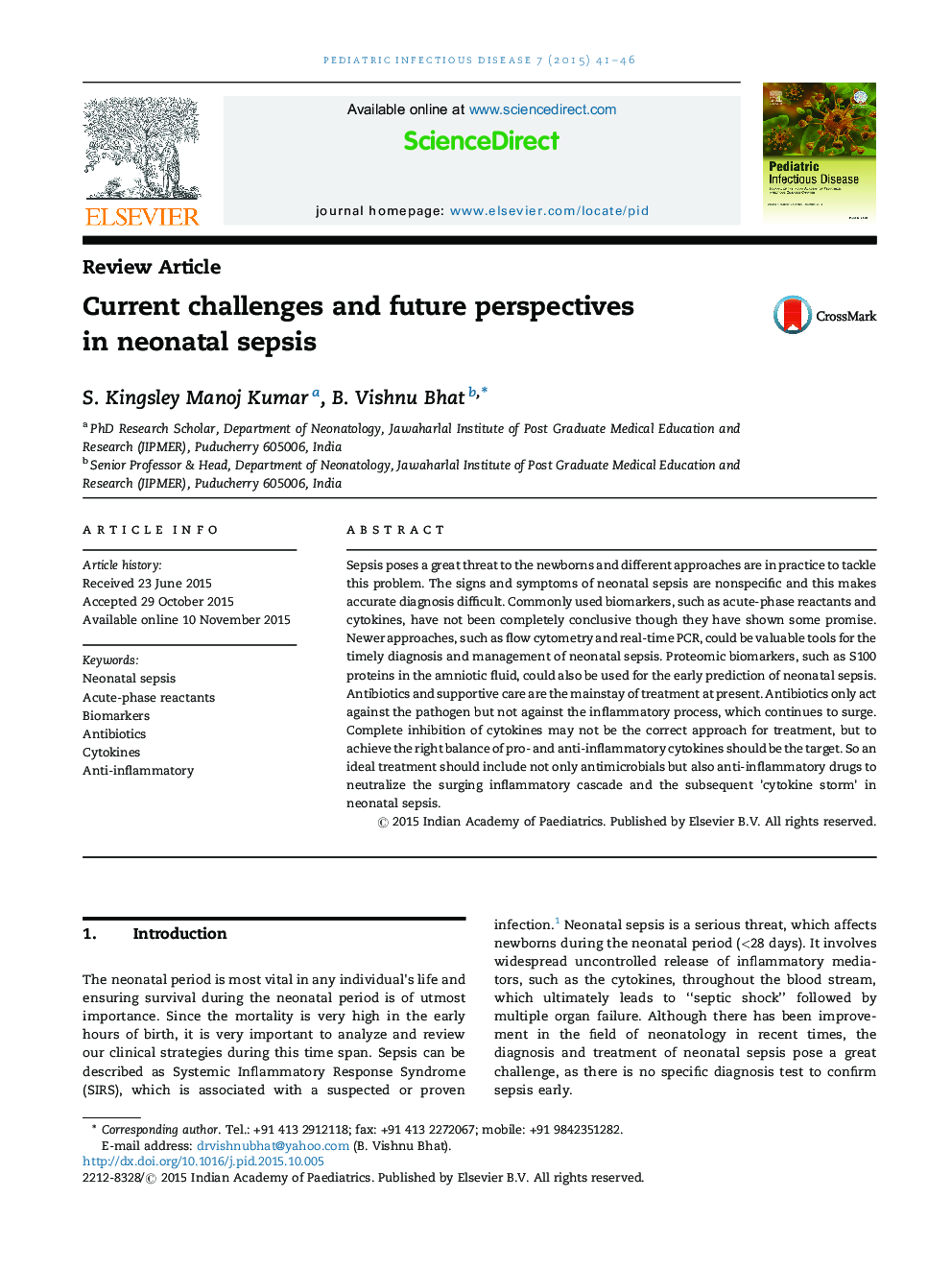| Article ID | Journal | Published Year | Pages | File Type |
|---|---|---|---|---|
| 3382268 | Pediatric Infectious Disease | 2015 | 6 Pages |
Sepsis poses a great threat to the newborns and different approaches are in practice to tackle this problem. The signs and symptoms of neonatal sepsis are nonspecific and this makes accurate diagnosis difficult. Commonly used biomarkers, such as acute-phase reactants and cytokines, have not been completely conclusive though they have shown some promise. Newer approaches, such as flow cytometry and real-time PCR, could be valuable tools for the timely diagnosis and management of neonatal sepsis. Proteomic biomarkers, such as S100 proteins in the amniotic fluid, could also be used for the early prediction of neonatal sepsis. Antibiotics and supportive care are the mainstay of treatment at present. Antibiotics only act against the pathogen but not against the inflammatory process, which continues to surge. Complete inhibition of cytokines may not be the correct approach for treatment, but to achieve the right balance of pro- and anti-inflammatory cytokines should be the target. So an ideal treatment should include not only antimicrobials but also anti-inflammatory drugs to neutralize the surging inflammatory cascade and the subsequent ‘cytokine storm’ in neonatal sepsis.
